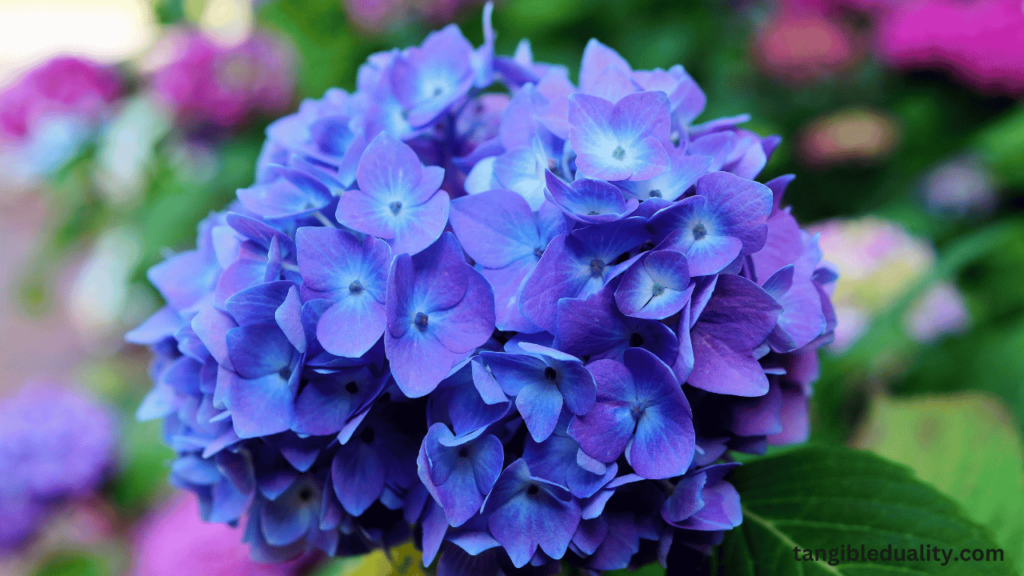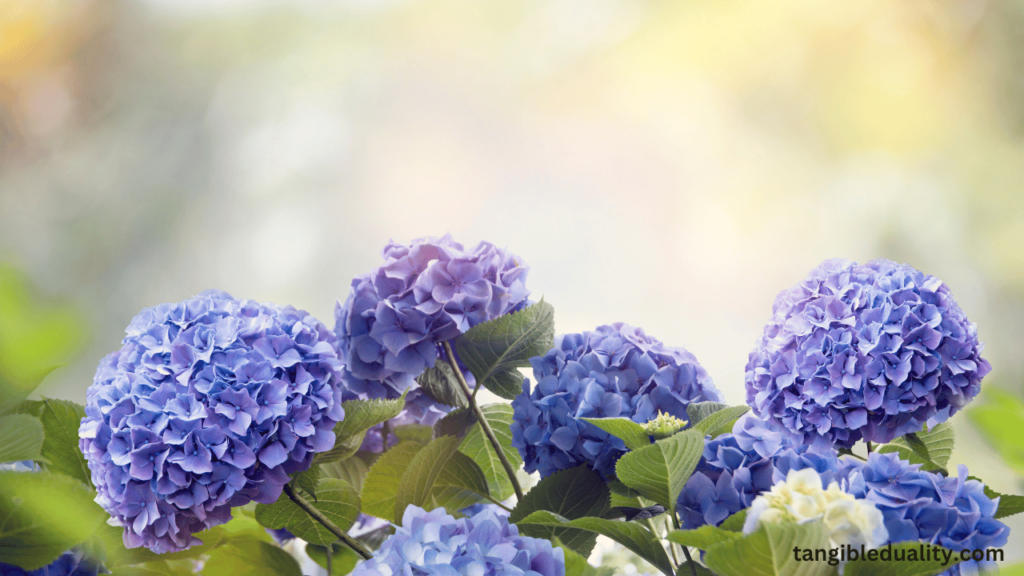The lavish blossoms and alluring colours that hydrangeas feature lend them a unique position in the hearts of gardeners all around the world. This is due to the fact that hydrangeas possess a distinctive place in their hearts.
These flowering shrubs’ potential to decorate a rich garden bed is just one of their many capabilities; they also have the power to grace a breathtaking landscape. They can’t fail to inspire amazement and wonder.
To effectively unlock the full potential of your hydrangeas and to preserve their health and vitality, it is essential to have a thorough understanding of the function that fertilizer and soil acidity play in the growth and development of your hydrangeas.
This information is essential in order to unlock the full potential of your hydrangeas correctly.

Understanding Hydrangeas
Before delving into the specifics of fertilization and soil acidification, it’s crucial to familiarize ourselves with the unique characteristics of hydrangeas. Belonging to the Hydrangeaceae family, hydrangeas encompass several species and cultivars, each with its distinct traits and requirements. From the classic mophead and lacecap varieties to the elegant panicle and oakleaf hydrangeas, these plants offer an array of options to suit every garden aesthetic.
One of the defining features of hydrangeas is their remarkable ability to adapt to varying soil conditions and climates. However, while they are relatively resilient, providing optimal growing conditions is critical to maximizing their beauty and longevity. Central to this endeavour is the careful management of soil fertility and acidity, both of which directly impact the health and vibrancy of hydrangea blooms.
The Role of Fertilizer
Fertilizer serves as a vital source of nutrients for hydrangeas, supplying essential elements necessary for growth, flowering, and overall plant health. Among the most critical nutrients are nitrogen (N), phosphorus (P), and potassium (K), often referred to as NPK. These macronutrients play distinct roles in supporting different aspects of plant physiology, making them indispensable for robust growth and development.
When selecting a fertilizer for hydrangeas, it’s essential to choose a product specifically formulated for flowering shrubs. Look for a balanced NPK ratio, such as 10-10-10 or 12-12-12, which ensures that hydrangeas receive adequate amounts of each nutrient without promoting excessive vegetative growth at the expense of blooms. Additionally, consider the presence of micronutrients like iron, magnesium, and calcium, which play supplementary roles in plant nutrition.
To effectively fertilize hydrangeas, apply the chosen fertilizer according to the manufacturer’s instructions, typically in early spring before the onset of new growth. Avoid fertilizing late in the growing season, as this can stimulate tender growth that is vulnerable to frost damage. Furthermore, the plants should be monitored for signs of nutrient deficiency or excess, and fertilization practices should be adjusted as needed to maintain optimal nutrient levels.

Soil Acidification
In addition to fertilizer, soil acidity profoundly influences the colouration of hydrangea blooms, offering gardeners a unique opportunity to customize their floral displays. The pH level of the soil determines the availability of certain elements, notably aluminium, which plays a pivotal role in the formation of blue pigments in hydrangea flowers.
For gardeners seeking vibrant blue blooms, lowering the soil pH is essential to enhancing the plants’ uptake of aluminum.
This can be achieved through the application of soil amendments such as aluminium sulfate or elemental sulfur, both of which acidify the soil and facilitate aluminium availability. Conversely, for those desiring pink or red blooms, raising the soil pH using lime or dolomitic limestone can inhibit aluminium uptake, resulting in the desired colouration.
Before embarking on soil acidification, conduct a soil test to assess the current pH level and determine the appropriate course of action. Soil testing kits are readily available at garden centres and provide valuable insights into soil composition, allowing for targeted adjustments to achieve optimal pH levels for hydrangeas.
Considerations and Caveats
While fertilizer and soil acidifiers can significantly enhance the growth and colouration of hydrangeas, their use must be approached with caution and consideration for environmental and plant health factors. Overapplication of fertilizer can lead to nutrient imbalances, excessive vegetative growth, and increased susceptibility to pests and diseases.
Similarly, indiscriminate soil acidification can have unintended consequences, altering soil chemistry and affecting the health of surrounding plants. It’s crucial to follow recommended application rates and methods, as well as to monitor soil pH regularly to avoid excessive fluctuations.
Additionally, be mindful of the specific requirements of different hydrangea species and cultivars, as well as local environmental conditions such as climate, soil type, and sunlight exposure. What works well for one variety may not necessarily be suitable for another, so take the time to research and understand the needs of your particular hydrangea plants.
Conclusion
When it comes down to it, the decision to apply fertilizer and soil acidifier to hydrangeas is essentially a personal one. The preferences of the individual, such as their gardening goals and the mental conditions that they are worried about, impact this decision.
When gardeners have a comprehensive grasp of the role that these amendments play in promoting healthy growth and vibrant flowers, they can make informed decisions that will increase the beauty and vitality of their hydrangea displays. These decisions will allow gardeners to grow more beautiful and vibrant hydrangeas.
With the appropriate amounts of fertilizer and soil acidifiers, ordinary hydrangeas have the potential to transform into remarkable garden focal points. Whether the objective is clusters of rosy pink or cascades of azure blue, this is always the case.
By providing them with the right care and attention, you can ensure that these flowering shrubs that have endured the test of time will continue to captivate and inspire future generations.
FAQs
Q: Can I grow tomatoes upside down?
Answer: Yes, you can! Upside-down tomato planters are a space-saving option for growing tomatoes. They can be hung from a balcony, porch, or even indoors near a sunny window.
Q: What are some unconventional uses for coffee grounds in the garden?
Answer: Coffee grounds can be used as a natural fertilizer, pest repellent, and even as a component in compost. Additionally, they can help improve soil structure and attract earthworms.
Q: Is it possible to grow mushrooms at home?
Answer: Absolutely! Growing mushrooms at home is a fun and rewarding activity. You can start with kits for beginner varieties like oyster mushrooms or experiment with more advanced techniques for cultivating different species.
Q: How can I make my own natural insect repellent for plants?
Answer: One effective recipe for a natural insect repellent involves mixing water, dish soap, and garlic. Simply blend garlic cloves with water, strain the mixture, and add a few drops of dish soap. Spray this solution on your plants to deter pests.
Q: What are some creative ways to use recycled materials in gardening?
Answer: Recycled materials like old tires, pallets, and plastic bottles can be repurposed into planters, raised beds, and trellises. Not only does this reduce waste, but it also adds a unique touch to your garden while saving money.

